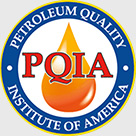The International Lubricant Specification Advisory Committee (ILSAC) and American Petroleum Institute (API) will begin licensed sale of oils meeting new GF-6 and SP classifications in May 2020.
The new classifications will replace the current API SN and ILSAC GF-5 standards, both of which have been in place since 2010. The API added an SN+ sub-classification in 2018. Products licensed against these standards will be better equipped to protect modern vehicle engines.
“The OEMs and vehicle manufacturers requested more robust engine oil specifications to meet the need of current and future engines,” Jeff Harmening, Manager of the API’s Engine Oil Licensing and Certification System (EOLCS), said. “These new specifications have seven new engine tests that are more representative of current vehicle parts. They introduced more stringent requirements. They will offer better wear protection and address the low speed pre-ignition issue. They will also introduce a higher level of chain wear protection and better fuel economy.”
Split in Two
Th GF-6 classification will be broken into two sub-categories, GF-6A and GF-6B. GF-6A will focus on more conventional oils, while GF-6B will set standards for lighter viscosity oils that have become popular in recent years. GF-6B oils will have a different fuel economy test than their 6A counterparts. The API will also introduce a new trademark, the shield, for the GF-6B sub-category. GF-6A will use the familiar “starburst” mark.
“GF-6A was intended to be a full GF-5 replacement and that is going to be backwards compatible with those oils. GF-5 usually focuses on five main grades, 0W-20, 0W-30, 5W-20, 5W-30 and 10W-30,” Harmening said. “There was a need in the industry to address the lower viscosity oils that are becoming more popular in the marketplace and ILSAC developed a different specification, 6B, for the 0W-16 viscosity grade. They requested the API develop a new trademark that would look entirely different so customers wouldn’t be confused.”
Read More: DEF Contamination a Danger to Pilots
While the licensing date is still a year away, Harmening said companies can begin distributing products that claim to meet SN, GF-6A and GF-6B specifications. However, customers may see claims that oils meet these new standards before that.
“That doesn’t mean those formulations can’t be introduced into the current SN GF-5s that are on the shelves. They can introduce products that claim to meet those specifications,” Harmening said. “What they can’t do is use the API Starburst on a GF-6 approved product until that licensing date. Similarly, they can claim to meet API SP, they just can’t use the doughnut.”
New Tests
Oils licensed against the new standard will have to pass seven new tests, including updated variations of oxidation and deposit, sludge and varnish, fuel economy and corrosion tests. New tests for chain wear and low speed pre-ignition have also been introduced.
“That’s part of the reason it took so long for the category to be developed,” Harmening said. “Five of them are replacement tests that were updated to include modern engines. Several of them were updated because the parts supply for the engines were discontinued.”
Harmening said shops, dealerships and anyone else that carries motor oil prepare to stock products that meet the new standards. He recommended they start working with their suppliers now to ensure they have access to new products. Still, SN and GF-5 products won’t disappear immediately when the licensing date arrives.
“GF-5 will not go away immediately. Essentially you will be able to see ‘starbursted’ oils for both GF-5 and GF-6,” Harmening said. “This allows the industry a one-year transition period to ensure they can get oil out to market meeting the new requirements while at the same time providing oil that meets past requirements. Starting May 2021, oils carrying the ILSAC GF-5 specification will no longer be allowed to display the API Starburst and you will only see it on oils meeting the new specifications.”




